
District Head Quarters Kollam
Area 2,491 Km
Population 25,118,
Literacy 91.49 %
Geographical hints: - The Malayalam Era is calculated from the founding of Kollam in the 9th century. The town’s later history is interwoven with the Portuguese, Dutch etc. Kollam was a revenue division of Travancore. In 1949, when the Travancore -Kochi State formed it becomes Kollam district. Sahya Mountains at the eastern frontier and Arabian Sea at the west. Sea shore: 37 Km ,Rivers: Kallada, Ithikkara Among the towns of Kerala, Kollam is second, only to Kodungallore in historic antiquity and was a renowned international emporium of trade of the ancient world. It was the capital of the powerful kingdom called " VENAD" which came into prominence in the 9th century A.D. According to some historians, the Malayalam era called the "Kollam era" was established by King Udaya Marthanda Varma, King of Kollam in 825. AD In the earliest days Phoenicians, Persians, Greeks, Romans, Arabs and the Chinese used to frequent the port. The descriptions by famed travellers like Marco Polo, Ibn Batuta, Sulyman of Siraf and others clearly highlighted the historical importance of Kollam as a commercial town Kollam maintains this tradition even today and it is one the major industrial and commercial centres of Kerala. It is the nerve-centre of Kerala's cashew industry.
The sheltered recess of the calm Arabian sea "THIRUMULLAVARAM", is an ideal place for swimming and bathing, and attracts domestic as well as international tourists. It is situated 5 K.M. from the town. Five Kilometres north of Kollam lies "THANKASSERY " which was an enclave of the Portuguese, Dutch and British in succession. The remnants of the Portuguese and Dutch forts still exist. The place is also well known for its 45 metre high light house. The centre of various tourism development activities is located in the "GUEST HOUSE COMPLEX" Asharam, where the District Tourism Promotion Council functions. The Government Guest House which was built by the Divan of erstwhile Travancore State CI.Munroe, in 1812, is even now a major attraction for its elegance and architectural beauty. This 48 acre complex on the banks of Ashtamudi lake is a naturalist's delight with a variety of rare trees and shrubs. The Children's Traffic Park, designed by the National Transportation Planning and Research Centre ( NATPAC) is located in this complex and is the largest Traffic park In Kerala. Adventure Park which is also in this complex is a novel experiment. The young and the adventurous can try out their skills in various arts of physical prowess.
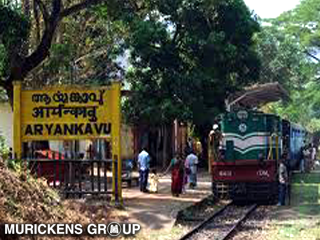
Situated about 73 kms east of Kollam is one of the important pilgrim centers of thedistrict. From very early days, it was an important trade route for merchants from either sides of western Ghats. The chief attraction of Aryankavu is the shrine dedication of Lord Sastha. The temple has some fine sculptures and mural paintings. Thousands of pilgrims flocks of this temple during the Mandala Pooja in December. All trains towards Shencottah have a stop at Aryankavu. About 5 kms away from Aryankavu there is a big waterfall known as Palaravi meaning river of milk. It is one of the well-known waterfalls in the south India, falling from a height of 300 feet. It is situated 66kms from Kollam on Kollam-Shencottah road. Chavara Chavara is situated 14 kms north of Kollam on the Kollam-Alappuzha road. Thousands of tonnes of mineral sand are exported from Chavara to various countries. The Kovilthottam port is situated within the limits of Chavara Panchayat. Four major industrial establishments are:- a).Indian Rare Earths b).The kerala Premo Pipe factory c).Kerala Mineral and Metal factoryd).Titanium Complex are in Chavara. Jetayu Para.
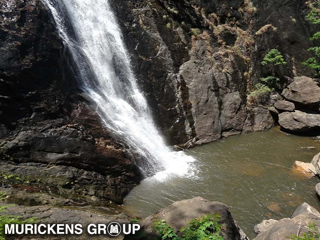
Palaruvi Waterfalls, which means the 'River of Milk', comes down from a height of 300 feet through rocks. This has turned into a delightful picnic spot, where one can enjoy uninterrupted spectacular view .These majestic waterfalls come into sight, any kind of fatigue disappears immediately. The cool water is frequented by those seeking a refreshing dip and it regularly attracts people in large numbers.it is one of the beautiful water falls in south India, situated 66 kms. away from Kollam. The scenic beauty, complete with hills, valleys and cascades, covered with dense tropical forest, is breath taking.
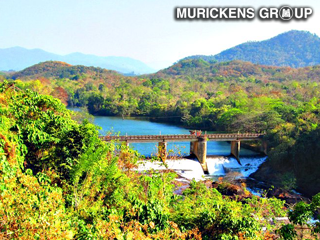
Thenmala is a tourist destination in the eastern side of Kollam district in Kerala, India. The place is world-famous because of the presence of the first eco-tourism centre in India. The word 'Thenmala' means "Honey hill" in Malayalam language. Thenamala town is 66 km away from Kollam city and just 14 km away from Tamil Nadu state border.
Thenmala attracts foreign and domestic tourists with a host of attractions. Boating on the lake, a rope bridge, trekking, mountaineering, biking,etc.The Nearest railway station is Punalur.Also nearby is a deer rehabilitation center where visitors can see deer in a forest setting and have a peep into a traditional tree house used by forest dwellers to escape harm from wild animals
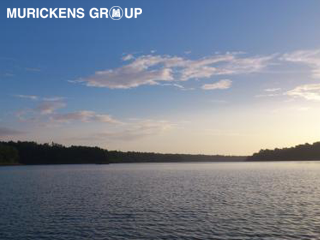
'SASTHAMKOTTA' another beauty spot of Kerala, is situated 29 kms. from Kollam. With the vast fresh water lake spreading over the valleys of several hills, Sasthamkotta lake can truly be called the "Queen of Lakes". it is the largest fresh water lake in Kerala.
Sasthamkotta is a village in the Kunnathoor,Kollam district.Kunnathoor taluk headquarters is located at Sasthamkotta.Shasthamkotta is nearly 25 km away from Kollam, the district headquarters,a few kilometres from Adoor municipality.The place is naturally beautiful and it is surrounded by hills and valleys.
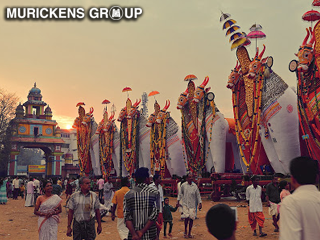
Oachira is on the border of Kollam and Allappuzha Districts, next to the National Highway 66 (NH 66). It is a very ancient pilgrimage center that is centered on the ParaBrahma Temple (that is dedicated to the Para Brahman (or Param Brahman) or Ohmkaram, the Universal Consciousness), which covers thirty-six acres of land. Hence there is no temple or idol for the presiding deity here. The temple festival 'Oachira Kali' held in June, is a crow pulling festival. Oachira North Muslim Masjid is another historical monument near Oachira town.
The major annual festivals are Oachira Kali or Oachirakali (held on the first and second of Midhunam) and the twelve-day Panthrandu Vilakku (twelve lamp festival), which is held in November/December. Oachira Kali is celebrated in commemoration of the battle of Kayamkulam, fought between Marthanda Varma, the Maharaja of Travancore and the Raja of Kayamkulam, on the plains of Oachira.
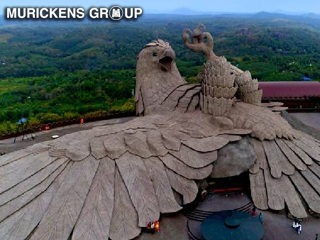
A huge rock, is another attraction in Kollam district. This huge rock is in theChadayamangalam village on the M.C road. The name comes from the epic Ramayana. It is believed that Jatayu, the giant bird in the epic, fell after failing in its attempt to spot Ravana from taking sita away. The rock is ideal for trekking by the lovers of adventure. The rock can be seen from the Chadayamangalam junction. itself. Karunagappally arunagappally is situated 27 kms north of Kollam. It is linked with Kollam by rail and road. There is a mini civil station at Karunagappally .Padanayarkulangara, which forms part of the town, was once the military station at Kayamkulam Rajas. An idol of Buddha, recovered from a local tank here, is now preserved in the Krishnapuram palace the headquarters of Kayamkulam Rajas situated north of Oachira. The town has a temple dedicated to Lord Siva, two old mosques and a mar Thomas Church.
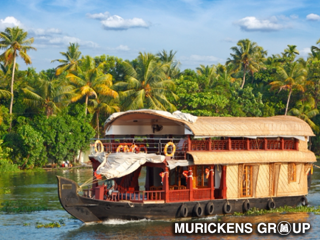
A full day on boat journey through the backwaters provide a unique opportunity to experience the natural beauty of God's own country. A large number of foreign tourists arrive at Kollam during the season ( November-March) for this 8 hrs long backwater cruise. Luxury boats of Government as well as private parties are operated from the main boat jetty during the season. Usually the trip starts at 10.30 am. and reaches Alleppy at 6.00 PM. A tourist information centre of District Tourism Promotion Council is functioning at the boat jetty area from 9 am. to 6 pm on all days except Sundays, to assist the tourists who arrive at the bus station and boat jetty area. Another Tourist Information Counter is also functioning at the Kollam Railway Station from 8.30 AM to 5 PM on all days except Sundays
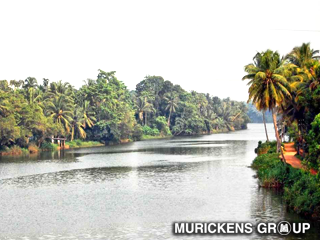
The Achencoil (or Achenkovil) is a small river in Kerala, India, formed towards the southern tip of the peninsula from the streams of the Rishimala River, Pasukidamettu River and the Ramakkalteri River. This river joins the Pamba River at Veeyapuram in the Alappuzha district of Kerala in South India. Achankovil is also the name of the forest area, which is the catchment area for this river, and of a small town situated in the Achenkovil forest area. it is Situated about 80 kms from Punalur.The Sastha temple here, situated amidst dense forest. The idol of Sastha is supposed to have been installed several centuries before the Christian Era. The two important festivals of this temple are Mandala Pooja (December-January) and the festival held at 'Revathi'(January-February). The two notable features of the festival are the Therotam (chariot festival) and Pushpabhishekam (offering of flowers). In no other temple of the South India are flowers offered to the deity so lavishly as at Achencoil.
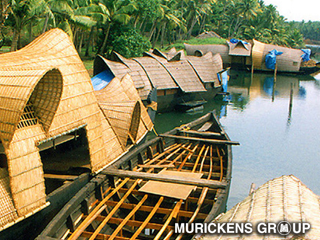
Alumkadavu located at 26 Kms from Kollam City and on the lakeside of Kollam-Alappuzha National Water Way. The "Green Channel Back Water Resort" at Alumkadavu makes itself a tranquil location for both foreign and Indian Tourists. The scenic beauty of blue green stretches of serene back water and rambling gardens of hundreds of coconut palms give the Green Channel Resort an incomparable beauty.The village is famous for the construction of houseboats. It is here that the majestic beauties, kettuvallams (traditional rice barges), that adorn our backwaters are made. Alumkadavu is also a coir manufacturing centre, making Kollam famous for its coir products. People flock to this sleepy village to rejuvenate themselves in the backwaters and soak in the view of the beautiful variety of fauna on display.
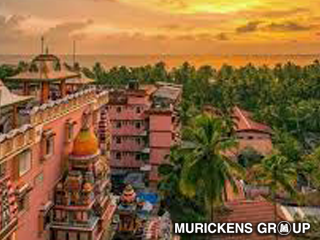
The history of Anchal says that it was the most popular commercial centre when it was part of the erstwhile Travancore. The new site of the town was forestland and the original Anchal village was a collection of several villages, namely Komalam,Choranadu,Thazhamel,Panayamcherry, Aerom, Vadamon, Agasthyakodu, PadighattinkaraNediyara and Kuruvikonam. These places were inhabited by Brahmins,Nairs and Ezhavas. In Panayamcherry there is a famous Ayappa temple built by Kottarakkara Thampuran. It is believed that it was the controlling centre of Anchal in old times.In due course, most of the Brahmins vacated Anchal and sold their forestlands to people from ther castes and Christian missionaries. After that many educational institutions came up in Anchal, established either by the government or by the missionaries. Now Anchal is the place in Kollam district which possesses highest number of educational institutions and co-related establishments.
The original five villages remain as the cultural centres of Anchal, away from the rush of the town. Anchal has an ancient agricultural market, with a cattle market every Wednesday and Saturday. It is one of the fast developing towns in Kollam. New buildings, infrastructure,shopping malls etc. give Anchal a city's face.
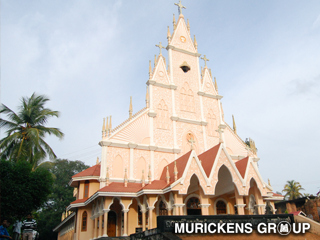
Kundara St. Mary's Jacobite Syrian Cathedral is located about 200 meters from Arumurikkada junction on Arumurikkada - Kuzhimathikadu - Nallila Road. The church in Malankara is an integral part of the Universal Syriac Orthodox Church with the Patriarch of Antiochas its supreme head. The local head of the church in Malankara is the Catholicose of India. His Beatitude Baselios Thomas I, ordained by and accountable to the Patriarch of Antioch. The Feast of Virgin Mary's birth is celebrated from September 1 to 8 every year.On September 7 evening a Rasa is conducted from Church to Cheerankavu Junction and Mukkada Junction and back to Church. Apostle Thomas founded one of his "seven and a half churches" in Kollam. They were family or community churches as neither Holy Bible was codified nor cross was acknowledged as the symbol of Christian faith in the first century AD. The church founded by the Apostle at the ancient Kollam port of Tarsish (thevalakara) was re-constructed three times. The second re organising of the Tarsish Christian nambuthiri community which was still inside vedic Vaishnavism was in the 4th century when a Persian cross brought from a Red sea port was erected in accordance with the Nicaea sunnahodose the first ecumenical council of theChristian church, meeting in ancient Nicaea. It was called by the emperor Constantine I, an unbaptized catechumen, or neophyte, who presided over the opening session and took part in the discussions declaration making the cross the symbol of Christian faith the World over for the first time. In 825 AD here re constructing the Tarsi sh-a -palli at Thevalakara for the third time as the first church founded by him with Syrian litergy after receiving the Tarsish-a-palli plates from Kulshekara kings which in reality laid the foundation of Christianity as a religion in Kerala outside Vedic Vaishnavism
MURICKENS GROUP
HO : KOTTAYAM-KADUTHURUTHY
BR : KOTTAYAM- CEMENT JUNCTION
ERNAKULAM-PALARIVATTAM
Real estate cunsulting officials at U.S.A. (Texas & Newyork) & Bombay
Email : mg@murickens.com, murickans@gmail.com